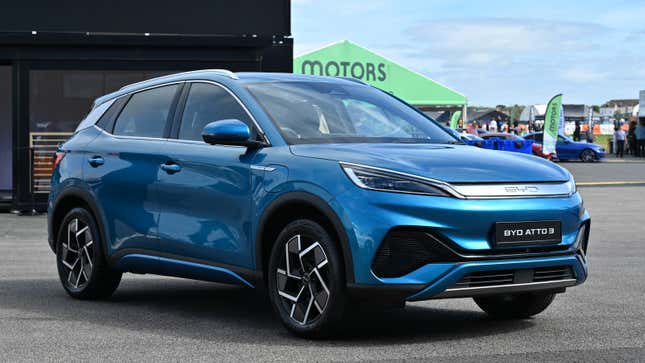For years, Apple was rumored to be working on a futuristic self-driving car, with the company tied to collaborations with Volkswagen and even a potential deal to buy McLaren at one point. That never happened and the project was canned after ten years, but now it appears some of the tech developed by Apple’s car program has found its way into cars built by another automaker.
The American tech giant wasn’t in cahoots with VW or McLaren, it wasn’t even working with its supplier Foxconn on its increasing endeavors into the automotive world. No, Apple was instead working with Chinese EV maker BYD, reports Bloomberg.
The iPhone maker reportedly worked with Chinese automaker BYD “for years,” explains Bllomberg. The two companies co-developed long-range batteries that formed the basis for the kind of cells BYD uses in its models today:
Apple and the Shenzhen-based company teamed up around 2017 to build a battery system using lithium iron phosphate cells, said the people, who asked not to be identified because the effort hasn’t been disclosed. The technology was designed to be longer-range and safer than typical electric-vehicle batteries at the time.
Though Apple doesn’t own any of the technology used in BYD’s current Blade batteries, the partnership shows just how far the iPhone maker went in its efforts to produce a car. The tech titan spent roughly $1 billion a year over the past decade on the vehicle project — often seen as one of the company’s “next big things” — before scrapping it in February.
The technology that Apple developed with BYD would have been highly customized for the once-planned vehicle, according to the people. As part of the secret partnership, Apple engineers brought expertise in advanced battery packs and heat management, they said. BYD contributed manufacturing know-how and advancements using lithium iron phosphate cells — better known as LFP.
BYD now uses the Blade battery tech across its entire lineup of electric cars, with a spokesperson for the company telling Bloomberg that it “holds complete property rights and patent rights for the Blade battery.”

The tech is set apart in the way it arranges the lithium iron phosphate cells that BYD uses in its cars, explains Autoevolution. This was Apple’s contribution to the project, the site reports, as it follows a similar method to how the tech giant stacks cells in products like its laptops:
At the time, Apple was working on several different battery technologies, using elements like nickel and alkaline. It had also invested millions of dollars into battery pack design and engineering that would allow space optimization for improved energy density. By combining BYD’s LFP tech with Apple pack design, the Cupertino company believed it could produce a safe, long-range battery system for its car project.
Apple reportedly backed away from the collaboration with BYD and looked across the auto industry for another battery partner to work with. The search was short-lived, however, and the tech giant canned its quest to build a car of its own earlier this year after ten years of work on the project.

